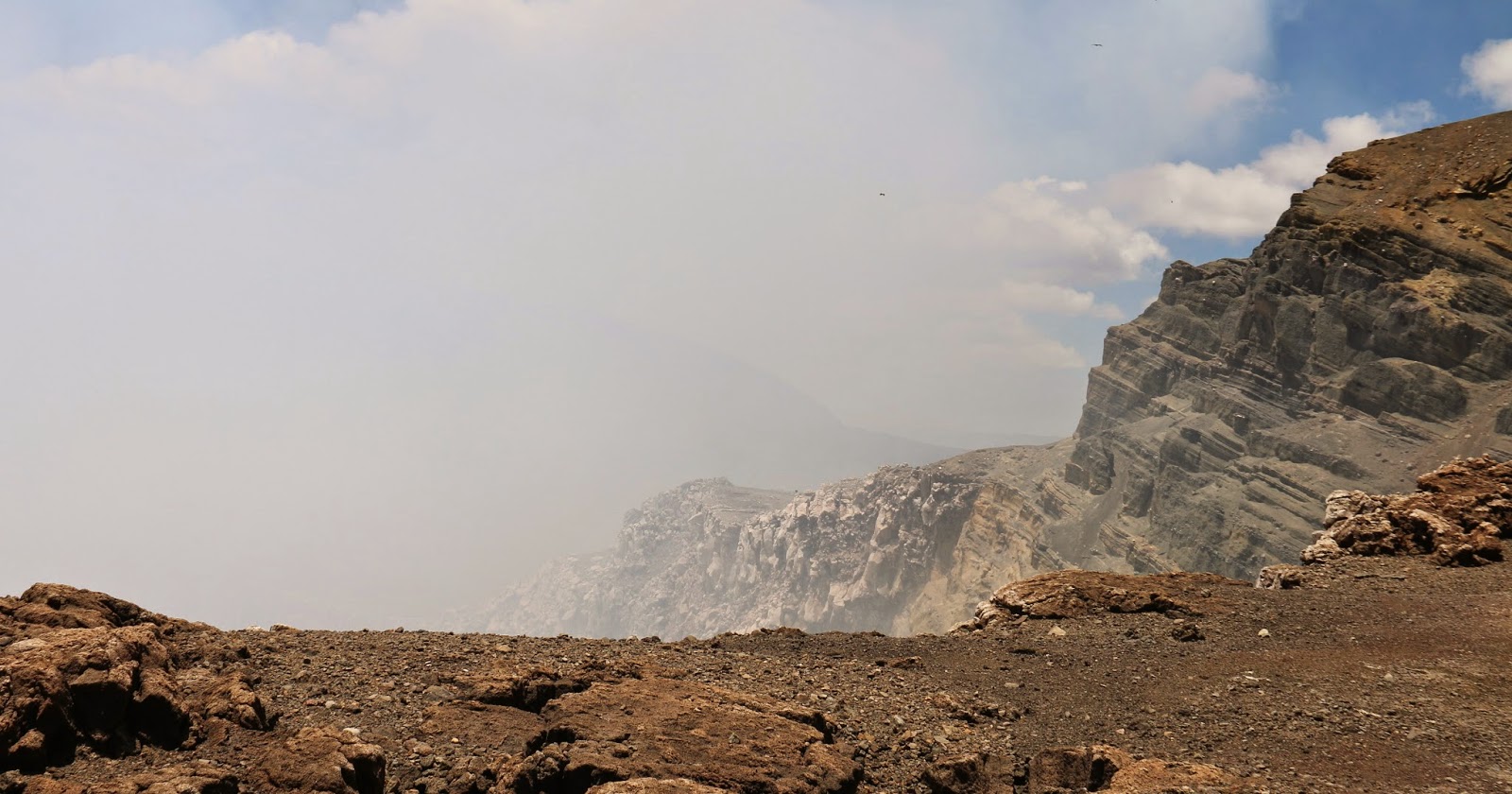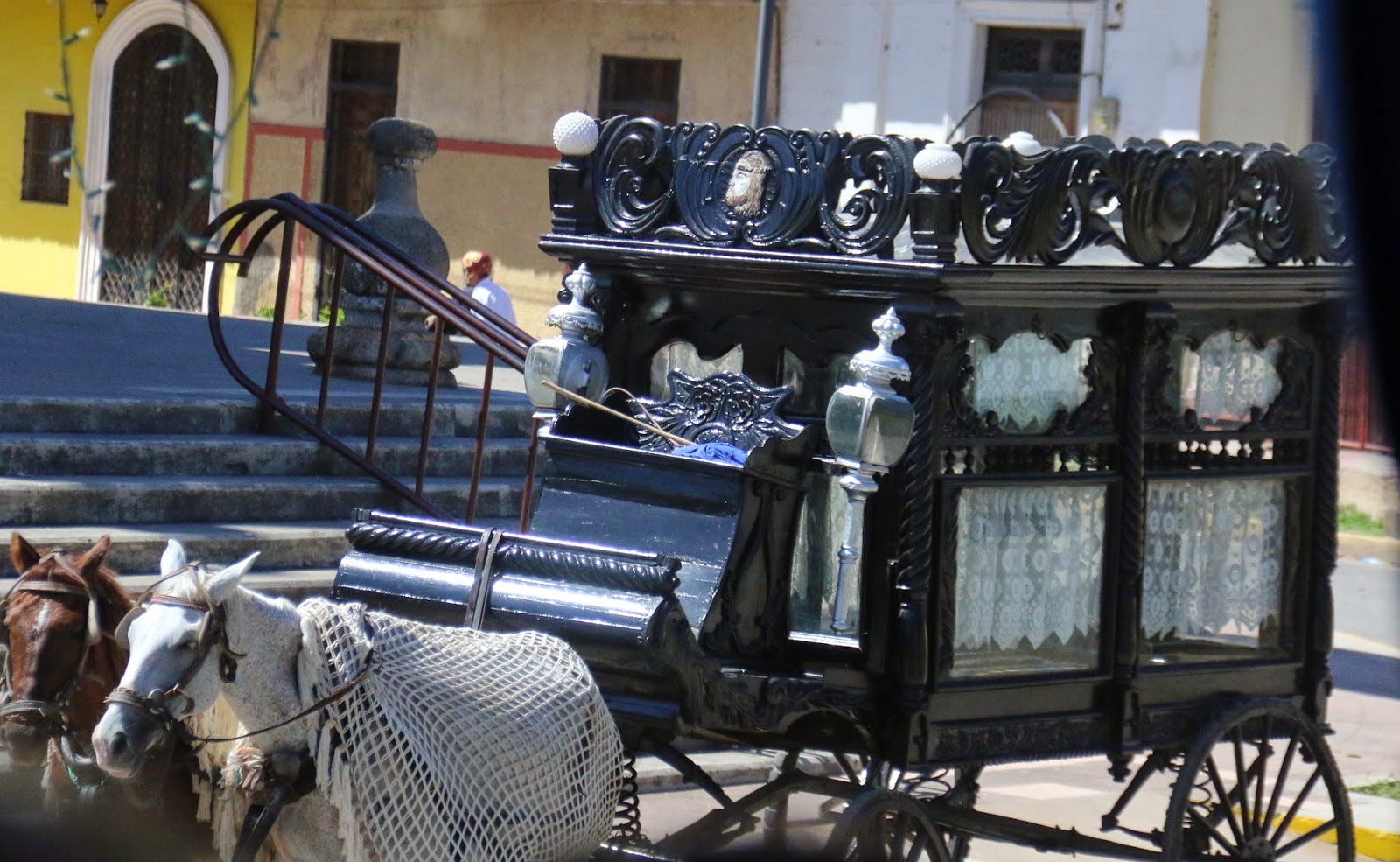.JPG) |
| As we arrived in port, pelicans were diving after fish. |
.JPG) |
| Plunk, there goes another pelican. |
March 25, Wednesday, and we’re were offloading via tenders
in Nicaragua. I never expected to be in
this country, as they’ve been known for a lot of civil and political wars, but
here I was. We had to fill out health
questionnaires and they took our temperatures when disembarking. That was a new one. I can’t imagine they let everyone in as
there’s been hacking, coughing, sneezing, and nose blowing going on the entire
cruise. A lot of sick people got on the
ship, but I’m religious about hand washing and it seems to help.
We were anchored in the San Juan del Sur Bay where we saw
lots of little boats, pelicans and hills rising around us with homes perched on
the side of them.
.JPG) |
| A beautiful hillside. |
Nicaragua, which means
here where the great waters are, has about 6 million people, with about 19,000
living in San Juan del Sur. The main
industries are fishing and tourism, and I could understand why. There are beautiful beaches adding to the
allure and this little town is Nicaragua’s most-visited beach town. The main attractions are not near, though,
and so onto a bus we went, heading off to see two volcanoes, one of which is
still active. By the time we’re done
with this trip I don’t want to be on another long plane ride or a bus.
.JPG) |
| We've seen more carts and horses here. |
.JPG) |
| Horses, carts and hay are another sight. |
.JPG) |
| And bicycle carts hauling people around. |
We stopped the bus to view some elusive howler monkeys, one
of many species of animals that live in Nicaragua. However, our first main stop was Lake
Nicaragua. It’s one of South America’s
two largest freshwater lakes, and the 19th largest lake in the
world, stretching 99 miles long and 45 miles wide.
.JPG) |
| Mombacho is in the background behind Lake Nicaragua. |
.JPG) |
| And on the right is some wind generation. Nicaragua is 51 percent renewable energy, using wind, hydro, geothermal and solar. |
.JPG) |
| And to add another dimension, a dead cane frog. We all thought it was alive. It just didn't move. So, yep, guess it was dead. |
Both dormant and active volcanoes rise out of
the lake that the Spanish conquistadors thought was the ocean because it was so
huge and had waves on it. It’s also home
to the freshwater shark that is found nowhere else in the world. Mombacho Volcano stands tall and majestic in
view of the lake and looks not very far away.
It was and is usually covered with what they call a cloud forest and was
awesome to see.
.JPG) |
| However, as we were leaving I did take a look at how their wire is draped through clean trees. |
.JPG) |
| Driving around you see lots of different things for sale. |
.JPG) |
| They make a lot of ceramic stuff here. |
The next wonder for our eyes was Apoyo Lagoon, formed when
hot springs filled the bowl of the dormant Apoyo Crater. The color was a dark turquoise blue and it
looked calm and refreshing from where we stood in the blistering heat.
.JPG) |
| Apoyo Lagoon, a beautiful place. |
.JPG) |
| And near the lagoon, lots of little shops for us tourists. |
.JPG) |
| These were part of a wall in the village by the lagoon. |
.JPG) |
| This little dog was checking out everyone. |
.JPG) |
| On our way again, there was a street vendor who makes things out of old tires. Very interesting stuff. |
From there we went to the Masaya Volcano National Park. This was the area where there is an active
volcano belching steam and spewing its noxious Sulphur smell. It was also the site of sacrifices as the
native people believed the eruptions were a sign of anger from their gods. The mouth of the Masaya Volcano was called
the “mouth of hell” and there is a cross above it today to keep the evil
spirits inside.
.JPG) |
| On the way to the volcano there were lava beds on either side of the road. |
.JPG) |
| Steaming, belching. |
.JPG) |
| Stinking. |
.JPG) |
| A wall along the edge is supposed to keep people from going past it and into areas where they shouldn't be. We had someone from the bus go up on the side of the hill to take a photo. People were yelling and waving at him. He thought they were waving at him and waved back. Makes ya wonder about some folks. At the top of the hill on the left you can see the cross to keep the evil spirits inside the volcano. |
.JPG) |
| This shows where some of the lava flowed down the hill during an eruption. |
Yay. Lunch time. We were hungry as we had been on a very
strict three-meal-a-day routine on the ship, plus snacks, of course.
.JPG) |
| We were even serenaded at lunch. |
.JPG) |
| I've never seen such a fancy and bright lady's room. |
.JPG) |
| There were lots of flowers and other plants I didn't recognize at the restaurant. |
.JPG) |
| There are flowers everywhere. |
From lunch we made a quick drive around a part of Granada,
the oldest city as it’s still in its original location. The drive was shortened as there were so many
streets having construction work done. It
makes you wonder with so much work how the country can be so poor, although
maybe you’re not that poor if you have a roof of sorts, a few chickens and
maybe a goat or a cow.
.JPG) |
| A working man after he got off the job for the day. |
.JPG) |
| More horse carts cuz I like them. |
.JPG) |
| Some carts are decorated with ribbons. |
.JPG) |
| There's always something quaint to see. |
Anyway, the 500-year-old of Granada is a patchwork quilt of
stunning buildings some of which show a Moorish style, colorful abodes,
concertina wire, horse-drawn carriages, statues and people just trying to
scratch out a living. All is mixed
together in a melting pot that seems as though it would leave a strange taste
in your mouth, yet apparently works. It’s
beautiful, yet ugly. We saw a lot here,
but it’s not my favorite country visited on this trip.
.JPG) |
| This was an interesting use of concertina wire. |
.JPG) |
| Every church here is beautiful, no matter how simple. |
.JPG) |
| There are a lot of obelisks in these countries. |
.JPG) |
| This was one of the most beautiful buildings we saw. |
.JPG) |
| Horse-drawn hearses are still used here. |
.JPG) |
| I love the decorated carriages. |
.JPG) |
| Many of the buildings and houses use aluminum for roofs. |
.JPG) |
| And I saw a number of people carrying baskets with loads on their heads. |
.JPG) |
| Many of the houses seem old and run down. |
.JPG) |
| Bayonet-style spikes are used as a deterrent against visitors on this fence. |
.JPG) |
| And then there was the guy rounding up his cows. |
.JPG) |
| We saw a few families making a home next to the road. |
.JPG) |
| It seems as though many homes use outhouses. |
.JPG) |
| Our final volcano for the day. |
I was glad to head back to our ship and set sail for Cabo
San Lucas, Mexico. Aaaaahhhhh. Three more at-sea days, March 26-28. You know what we’ll do … the usual. Love my schedule.
.JPG)
.JPG)
.JPG)
.JPG)
.JPG)
.JPG)
.JPG)
.JPG)
.JPG)
.JPG)
.JPG)
.JPG)
.JPG)
.JPG)
.JPG)
.JPG)
.JPG)
.JPG)
.JPG)
.JPG)
.JPG)
.JPG)
.JPG)
.JPG)
.JPG)
.JPG)
.JPG)
.JPG)
.JPG)
.JPG)
.JPG)
.JPG)
.JPG)
.JPG)
.JPG)
.JPG)
.JPG)
.JPG)
.JPG)
.JPG)
.JPG)
.JPG)
.JPG)
.JPG)
No comments:
Post a Comment